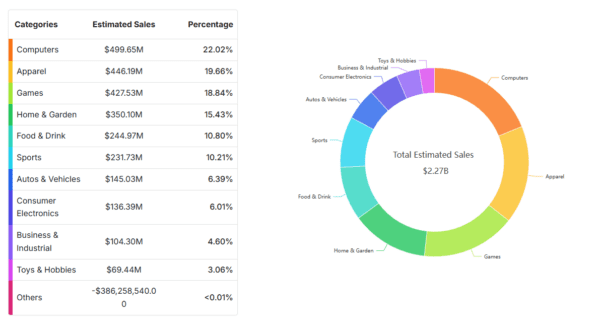
Shipping is an essential part of any e-commerce business, but it can also be a source of frustration and stress for sellers. Whether it’s dealing with delays, damages, lost packages, customs fees, or customer complaints, shipping can pose many challenges that can affect your reputation and profitability. In this blog post, we will explore some of the most common shipping challenges for sellers and how to overcome them with some practical tips and best practices.
Understanding the common shipping challenges:
Choosing the right shipping carrier
There are many different shipping carriers available, each with its own strengths and weaknesses. It can be difficult to know which carrier is the best fit for your business.
Setting accurate shipping rates
Shipping rates can vary depending on the weight and size of your product, the distance it needs to travel, and the shipping carrier you choose. It’s important to set accurate shipping rates so that you don’t lose money on each sale.
Managing shipping costs
Shipping costs can be a major expense for ecommerce businesses. There are a number of ways to manage shipping costs, such as negotiating discounts with shipping carriers, consolidating shipments, and using shipping software.
Shipping delays
Shipping delays can happen for a variety of reasons, such as bad weather, strikes, or backlogs at the shipping carrier. When shipping delays occur, it’s important to communicate with your customers and keep them updated on the status of their order.
Damaged shipments
Unfortunately, even the most carefully packed shipments can be damaged in transit. When this happens, it’s important to have a process in place for handling damaged shipments. This may involve issuing refunds, replacing the product, or working with the shipping carrier to file a claim.
Overcoming shipping challenges
Shipping delays:
One of the most common shipping challenges for sellers is shipping delays. Shipping delays can occur due to various reasons, such as weather conditions, carrier errors, peak seasons, holidays, or unforeseen events. Shipping delays can negatively impact your customer satisfaction and retention, as well as your cash flow and inventory management.
To overcome shipping delays, you should:
Plan ahead and ship early. If you know that there are certain times of the year when shipping is likely to be slower or more congested, such as Black Friday, Cyber Monday, Christmas, or Chinese New Year, you should prepare your orders and ship them as early as possible to avoid the rush.
Choose reliable and reputable carriers. You should research and compare different shipping options and carriers and choose the ones that have a track record of delivering on time and providing quality service. You should also check their policies and procedures for handling delays and claims.
Communicate with your customers. You should keep your customers informed about the status of their orders and provide them with tracking information and updates. You should also set realistic expectations and be transparent about the possible causes and duration of delays. If a delay occurs, you should apologize and offer compensation or incentives to retain their loyalty.
Optimize your packaging. You should ensure that your packaging is sturdy, secure, and suitable for the type of product you are shipping. You should also use appropriate labels and stickers to indicate the contents, destination, and handling instructions of your package. This can help prevent damages, losses, or misdeliveries that can cause further delays.
Shipping damages
Another common shipping challenge for sellers is shipping damages. Shipping damages can occur due to poor packaging, rough handling, accidents, or environmental factors. Shipping damages can result in product returns, refunds, replacements, or disputes that can cost you money and time.
To overcome shipping damages, you should:
Use quality packaging materials. You should invest in durable and protective packaging materials that can withstand the rigors of transit and protect your products from shocks, vibrations, moisture, dust, or dirt. You should also use adequate cushioning and fillers to prevent your products from moving or shifting inside the package.
Follow the packaging guidelines of your carrier. You should follow the packaging guidelines and standards of your carrier to ensure that your package meets their requirements and specifications. You should also check their policies and procedures for handling damages and claims.
Insure your shipments. You should consider insuring your shipments to cover the value of your products in case of damages or losses. You should also keep records of your invoices, receipts, photos, or other documents that can prove the condition and value of your products before shipping.
Test your packaging. You should test your packaging before shipping to ensure that it can withstand the potential stresses and hazards of transit. You can use various methods to test your packaging, such as drop tests, vibration tests, compression tests, or temperature tests.
Shipping costs
A third common shipping challenge for sellers is shipping costs. Shipping costs can vary depending on various factors, such as the size, weight, destination, speed, and service level of your shipment. Shipping costs can affect your profit margin and competitiveness in the market.
To overcome shipping costs, you should:
Negotiate with your carrier. You should negotiate with your carrier to get the best rates and discounts for your shipments. You should also leverage your volume and frequency of shipments to get better deals and incentives from your carrier.
Optimize your shipping zones. You should optimize your shipping zones to reduce the distance and time of your shipments. You can do this by choosing carriers that have a strong presence in your target markets or by using multiple fulfillment centers or warehouses that are closer to your customers.
Offer free or flat-rate shipping. You should consider offering free or flat-rate shipping to attract more customers and increase conversions. You can do this by absorbing the shipping costs into your product price or by setting a minimum order value or quantity to qualify for free or flat-rate shipping.
Use hybrid or multi-carrier shipping. You should consider using hybrid or multi-carrier shipping to save money and time on your shipments. Hybrid shipping is when you use a combination of different carriers or services to ship your products, such as using a courier service for local deliveries and a postal service for international deliveries. Multi-carrier shipping is when you use different carriers or services for different products or customers based on their preferences or needs.
Prepping Your Items
Time-consuming and Tedious One of the biggest challenges for sellers is the laborious task of preparing items for shipment. The process often involves individually packaging and labeling each product, which can be time-consuming and prone to errors. To overcome this challenge, consider using Fulfillment by Amazon (FBA) software. FBA software enables you to scan items, auto-print FBA labels, and efficiently pack and upload box content information on Amazon automatically. This saves valuable time and ensures efficient processes.
Additionally, adopting batch processing techniques can help streamline the prepping process. Group similar items together and package them simultaneously, reducing the time and effort required for individual packaging. Implementing quality control measures can also help identify any discrepancies or issues in the prepping stage, allowing for timely corrections.
Managing Inventory
Keeping Track of Stock Maintaining accurate inventory records is crucial for sellers to prevent overselling or running out of stock. Inaccurate inventory management can lead to dissatisfied customers and lost sales. To address this challenge, invest in inventory management software that integrates with your selling platforms. These tools provide real-time inventory updates, streamline order fulfillment, and help you avoid stock-related issues.
Implementing barcode scanning technology can enhance inventory accuracy and efficiency. By scanning product barcodes during stock intake and order fulfillment, you can automatically update inventory levels, track sales, and identify low-stock items that need replenishment. Utilize automated alerts and notifications to stay informed about inventory thresholds and take proactive measures to avoid stockouts.
Packaging
Ensuring Safe and Secure Shipping Proper packaging is essential to protect products during transit and minimize the risk of damage. Sellers must carefully choose appropriate packaging materials and ensure secure packaging for fragile or delicate items. Investing in high-quality packaging supplies and using cushioning materials like bubble wrap, packing peanuts, or air pillows can help mitigate this challenge and safeguard your products.
Consider adopting standardized packaging procedures to ensure consistency and efficiency. Create packaging guidelines that outline the appropriate materials, techniques, and labeling requirements for different product types. Providing clear instructions to your team or fulfillment partners regarding packaging standards helps maintain quality and reduces the chances of errors.
International Shipping
Navigating Customs and Regulations Expanding your customer base globally is an exciting opportunity, but international shipping comes with its own set of challenges. Sellers must navigate customs regulations, complete necessary paperwork, and calculate accurate duties and taxes. Partnering with a reliable international shipping provider or utilizing the services offered by marketplaces can simplify the process and ensure smoother cross-border transactions.
Consider integrating automated customs documentation systems into your shipping processes. These systems generate and populate customs forms with accurate information, minimizing errors and reducing the time required to complete customs paperwork. Utilize international shipping calculators that provide real-time duty and tax estimates based on the destination country, ensuring transparency for both you and your customers. Additionally, stay updated on changes in international shipping regulations and maintain a comprehensive knowledge base to ensure compliance.
Tracking Shipments
Ensuring Visibility and Communication Customers expect to track their orders from the moment they are shipped until they arrive at their doorstep. Providing shipment tracking information is essential for customer satisfaction. Consider integrating order tracking systems into your selling platforms or partnering with shipping carriers that offer robust tracking capabilities. Proactive communication with customers regarding tracking updates can also help mitigate shipping-related inquiries.
Implement a centralized tracking system that consolidates information from different carriers. This allows you to provide customers with a single tracking link for all their orders, regardless of the shipping carrier used. Utilize automated notifications and personalized tracking updates to keep customers informed about their shipment’s progress. Promptly address any tracking issues or delays to maintain customer confidence.
Returns and Exchanges
Streamlining the Process Handling returns and exchanges is an integral part of the selling process. Simplify the returns process by implementing a clear and customer-friendly return policy. Provide prepaid return labels whenever possible to enhance convenience. Utilize automation tools to process returns efficiently, update inventory, and issue refunds promptly.
Integrate a self-service returns portal into your website or marketplace listings. This allows customers to initiate returns and generate return labels independently, reducing manual intervention. Implement a streamlined returns management system that automates the processing of returned items, tracks return statuses, and triggers inventory updates and refunds. Regularly review return data to identify patterns and take proactive measures to address product quality or packaging issues.
Address Accuracy
Reducing Shipping Errors Incorrect or incomplete addresses can lead to delivery delays or failed deliveries. Implement address verification systems to reduce errors and ensure accurate shipments. Some shipping software integrates address validation tools that can automatically verify addresses, saving time and minimizing shipping errors.
Utilize address autocomplete functionality during the checkout process to minimize manual data entry errors. Implement address validation APIs that cross-reference addresses against reliable databases to ensure accuracy. Integrate real-time address verification during order processing, allowing you to correct any discrepancies before shipment. Regularly update your address database to ensure it reflects the most recent postal service standards and changes.
Peak Seasons and Holidays
Managing Increased Volume During peak seasons and holidays, sellers often experience a surge in orders, which can strain shipping processes. Prepare in advance by forecasting demand, adjusting inventory levels, and hiring additional staff or outsourcing fulfillment to third-party logistics providers. Communicate shipping cutoff dates clearly to customers to manage expectations and avoid disappointments.
Implement a robust order management system that can handle increased order volumes efficiently. Utilize warehouse management software to optimize warehouse operations, reduce picking and packing errors, and streamline order fulfillment during high-demand periods. Collaborate with shipping carriers to secure additional capacity or expedited shipping options to meet customer expectations during peak seasons.
Customer Service: Resolving Shipping-related Issues
Even with the best shipping practices, issues can still arise. Promptly addressing customer inquiries, tracking delays, or lost packages is crucial for maintaining a positive seller reputation. Ensure you have a dedicated customer service team or system in place to handle shipping-related issues efficiently. Prompt and transparent communication with customers goes a long way in resolving problems and maintaining customer satisfaction.
Invest in a customer service ticketing system that centralizes all customer inquiries and provides automated responses for common shipping-related issues. Train your customer service team to handle shipping inquiries effectively, providing clear and accurate information to customers. Implement proactive communication by sending shipping updates, delay notifications, and resolution timelines to customers affected by any shipping issues.
How does SellerChamp help in overcoming your shipping woes?
Anticipating the major challenges, SellerChamp is actively working towards making its customers’ experience easier as compared to other sellers. At SellerChamp, you get upto 80% discount on UPS and Fedex – saving a good chunk of money and time.
In order to provide you with a one stop shipping solution under our umbrella, we have partnered with shipping providers which saves you ton of money too.
ShipStation
Send relevant product information, including item BIN locations, item weight/dimensions, UPC, etc., to ShipStation for a faster pick-and-pack process and quicker shipping.
ShipRush
Eliminate the hassle of switching between programs just to print shipping labels by launching ShipRush directly within SellerChamp™.
Apart from these integrations, SellerChamp™ also has deep integration with third-party fulfillment providers –
- Amazon – Maximize exposure and sales by listing your FBA products on various channels and utilizing Fulfillment By Amazon for shipping.
- Flexport – Fulfill orders through Flexport and gain fast-shipping badges like Walmart 2-day delivery and eBay Fast ‘N Free, enhancing your visibility.
- CapitalTIre – Opt for CapitalTire’s fulfillment services to ensure swift shipping of your tires, maintaining a competitive edge in sales.
- TireWarehouse- Leverage TireWarehouse to sell major tire brands nationwide, leveraging their extensive shipping network.
- ATD – With 146 distribution centers spanning North America, you can confidently rely on ATD for prompt and competitive product shipping.
Final Thoughts
By understanding and leveraging important marketplace statistics, sellers on platforms like eBay, Etsy, Amazon, and Walmart can make informed decisions, enhance their strategies, and optimize their online businesses for success. From the effectiveness of influencer marketing to the impact of social proof, abandoned cart recovery, and the rise of social commerce, sellers can adapt their approaches to align with consumer behavior and preferences. By staying up to date with these marketplace statistics, sellers can gain a competitive edge and drive sales in the dynamic world of e-commerce.


















